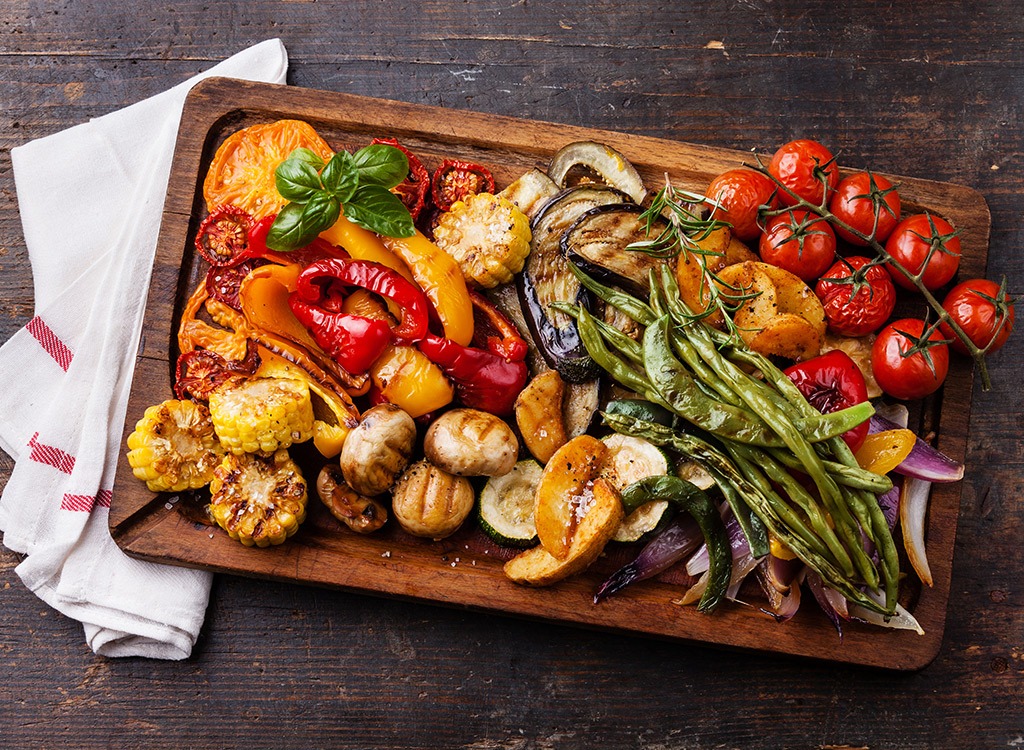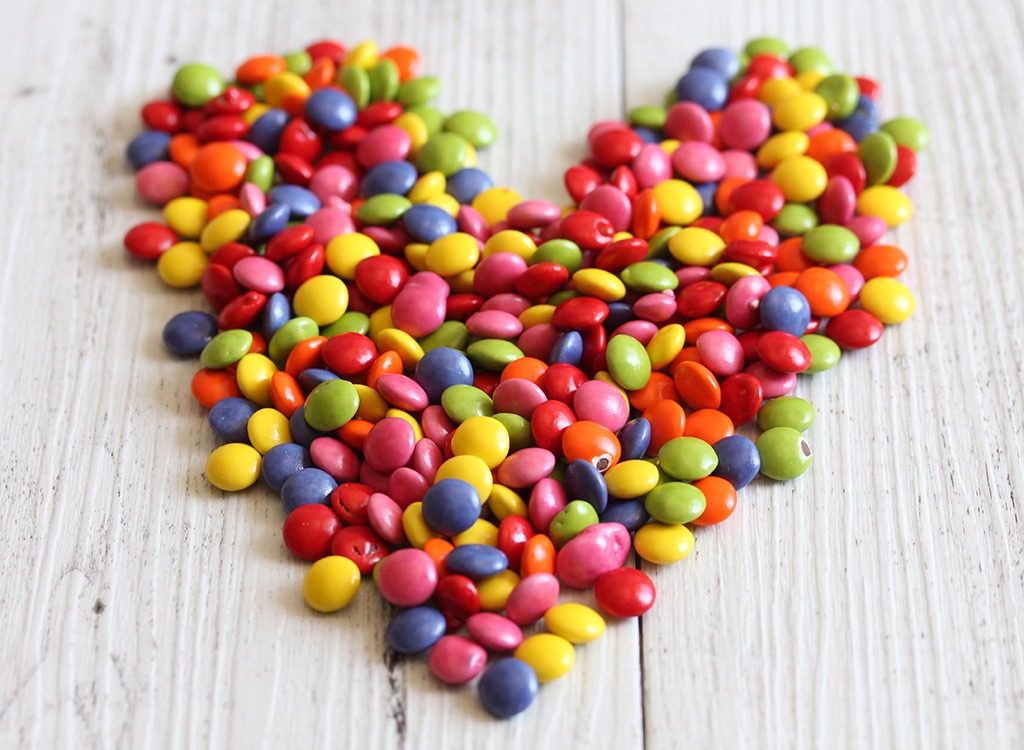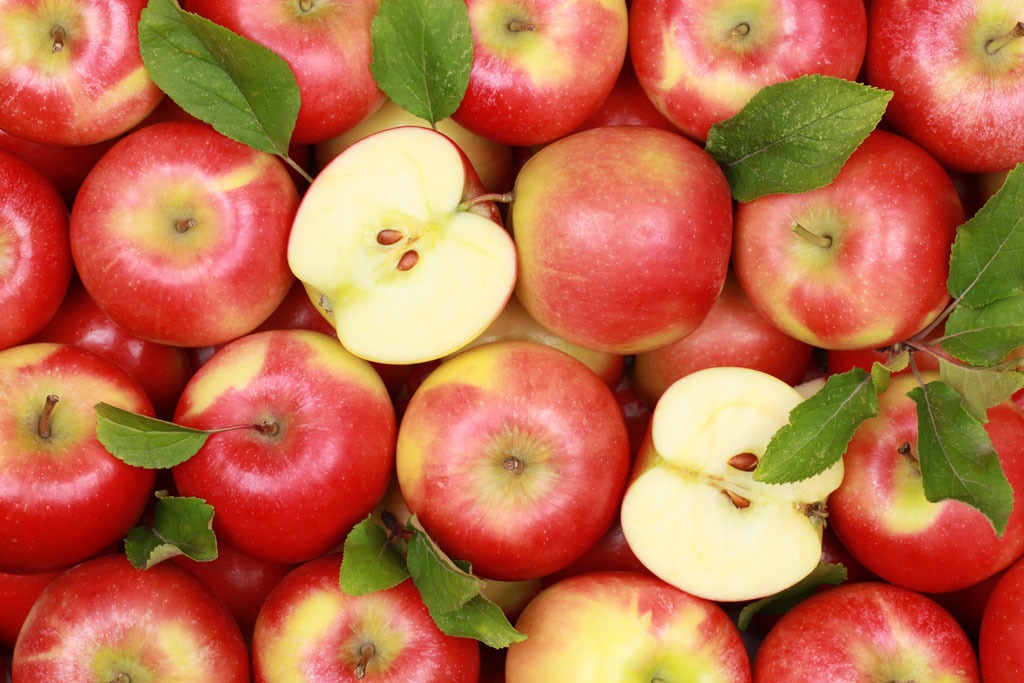The 25 Best-Ever Nutrition Tips

Start a new nation and establish freedom for all? We got Jefferson, Adams, and Franklin in a room and they banged out the most revolutionary document ever created.
Stop the Nazis and end the war in the Pacific? We corralled the greatest scientific minds in the country and created the Manhattan Project. Game over.
So when it comes to taking aim at our obesity crisis (or just helping you fit into that dress), we here at Eat This, Not That! figured we’d take a page out of history, and gather the most educated nutritional thinkers in the land to tell us their absolute best tips for losing weight and getting a perfectly lean, flat belly. So ask not what abs can do for you; ask what you can do for abs. The answers are right here.
Set a Carb Curfew

Chris Powell, the trainer who has helped hundreds of overweight people lose up to half their body weight on ABC’s reality series Extreme Weight Loss, knows how to blast fat. Though starchy and sugary carbs—like quinoa, potatoes and fruit—aren’t totally off limits on the show, participants never consume them after dark. As they do, so should you. “For dinner, contestants always have a high-protein, high-fat meal with plenty of fibrous veggies,” Powell tells Eat This, Not That!. “If they have a post-dinner snack, they stick to protein-rich, high-fat foods like almonds or 2% milk-fat string cheese,” he explains. This is because, he adds, axing carbs at night flips the fat burning switch by increasing the amount of fat burning hormones released while we’re asleep. To discover which carbs lead to a flat belly, read this essential list of the 9 Best Carbs for Fat Loss!
Drink Pu-erh Tea

A fermented Chinese tea with an earthy flavor, Pu-erh can literally shrink the size of your fat cells. To discover the brew’s fat-crusading powers, Chinese researchers divided rats into five groups and fed them varying diets over a two month period. In addition to a control group, there was a group given a high-fat diet with no tea supplementation and three additional groups that were fed a high-fat diet with varying doses of pu-erh tea extract. The researchers found that the tea significantly lowered triglyceride concentrations (potentially dangerous fat found in the blood) and belly fat in the high-fat diet groups. It’s a natural fat-blaster, along with barberry, rooibos and white tea. We love Pu-erh so much, we made it part of our brand new weight-loss plan, The 7-Day Flat-Belly Tea Diet and Cleanse! Test panelists lost up to 10 pounds in just one week!
Crowd Out Bad Habits

Those rock hard abs won’t be built in a day—they’ll be built in staggered days. Julie Odato, certified personal trainer and Program Director at Jump Start Retreats in the Catskills, says staying on the diet is the hardest part, and has a trick for sticking to the program: “Alternate days of your new diet plan with your normal eating habits,” she advises. “For example, do the new plan Monday, Wednesday, Friday and Sunday, and observe your regular habits Tuesday, Thursday and Saturday.” You can also apply the same principle when it comes to adopting a healthier exercise routine. “At the end of the first seven days,” she says, “you will have improved your eating habits over half of the days of the week and will feel ready to launch into week two!” The high you get from keeping it going for several weeks—not to mention the better body image—will eventually help you crowd out the bad eating patterns with even more good ones.
Make Special Requests

Powell has another awesome tip: “Participants find it challenging to stay on track with their diet when they’re eating out—especially when they’re with friends who don’t share their newly adopted healthy lifestyle,” he says. There are few different ways Powell helps his clients stay on track when facing this obstacle. For starters, he suggests drinking a big glass of water before the meal starts. This tames hunger, making it easier to order a smart entree. “Steer clear of anything fried, sautéed, crusted, or breaded, and order all dressing and sauces on the side,” he advises. “When you order, let the waiter know you would like a to-go box when the food arrives. Cut your meal in half immediately and place half in the box to go,” he suggests. Out of sight, out of mind—and don’t forget, similar rules apply to take out food, too.
Mix Up Your Greens

If your go-to green for salads is spinach or romaine, that’s great—they’re both packed with tons of nutrients. But a varied diet is a healthy diet, and there are tons of other greens out there that are equally delicious. If you like lighter leafy vegetables, try swapping your spinach for some arugula, leaf lettuce, watercress or parsley, or combine a few different greens to get an incredible mixture of vital nutrients that will power you through the rest of your day. If you prefer heartier greens or like to go with seasonal options throughout the colder winter months, look for toothsome leafy vegetables like kale, chard, cabbage or Chinese cabbage, beet greens, or even collards. Tougher greens can be lightly blanched in boiling water to give them a more pleasing texture—and will warm you up on especially frigid days. Read here for the 10 Superfoods Healthier Than Kale!
Ditch Your Food Rules

“When nourishing your body with foods, listen to what it needs,” says yoga instructor Carrie Seyer, who is leading an upcoming CorePower Yoga wellness retreat at Twin Farms in Barnard, Vermont. “Discard dogma and food rules, and eat for fuel and energy, whatever that may be for that day.” As much as you can, she adds, “choose whole, unprocessed foods, but also allow for an occasional splurge or two to help maintain a healthy mindset. Our bodies are intelligent and always asking for what they need to function optimally, whether it’s vegetables or even a bit of sugar; there’s reason behind the craving.”
Be Practical Not Perfect

So what exactly, you ask, should you eat? “Improving your eating habits is a process of being practical, not perfect,” says Julie Odato, certified personal trainer and Program Director at Jump Start Retreats in the Catskills. “There are some specific foods that, realistically you know you will not live without. So, work with that. Keep that food to once a week or once a month instead of failing at never [eating it].” Or indugle guilt-free with these 50 Best Snacks for Weight Loss!
Load Up Your Fridge

“Despite what some people may believe, healthy eating doesn’t require complex recipes — or any recipes at all. I make it a point to cook a lot of lean proteins, veggies and a high quality grains like quinoa so when my day slips away, I always have healthy pre-cooked foods on hand to throw together to make a meal,” says chef Devin Alexander, of NBC’s The Biggest Loser. “When I’m working with a client who is particularly busy,” adds Paula Hankin, Manhattan-based chef, “I always suggest keeping Protein Bowl ingredients on hand. I might recommend salmon and chicken as healthy lean proteins, and then I’ll instruct them to pair their meat of choice with leafy greens, a hard-boiled egg, sliced fruit, and nuts or seeds. If everything is prepped ahead of time, all they have to do it throw the stuff into a bowl before they eat. It’s so simple and quick!”
Use the 1 in 10 Rule

For every 10 grams of carbohydrate listed on the label, look for at least one gram of fiber. Why 10:1? That’s the ratio of carbohydrate to fiber in a genuine, unprocessed whole grain. The recommendation comes from a study published in the journal Public Health Nutrition that evaluated hundreds of grain products; foods that met the 10:1 ratio had have less sugar, sodium, and trans fats than those that didn’t. Speaking of magical ratios, find out How Maria Menonous Lost 40 Pounds!
Become Action-based

Once you’ve gotten into the swing of a healthier routine, it’s easy to center your goals around numbers on the scale. Don’t. Instead, make them action-based. David Chesworth, fitness specialist at Hilton Head Health (H3), a world-renowned weight loss destination on Hilton Head Island in South Carolina, explains: “We are creatures that desire instant gratification. I hear ‘I want to lose 20 pounds,’ all the time. This is not a goal that easily sets you up for success.” Simply put, you’re setting yourself up for bucket o’cheese fries-infused failure. “[Instead, make your goals things like] going for a 30 minute power walk, or going to your favorite Zumba class after work on Fridays. As soon as you finish that Zumba class, you feel accomplished and fulfilled,” says Chesworth.
Boost Flavor to Cut Calories

Ever notice how everything inside a McDonald’s—the burgers, the fries, the shakes—smells exactly the same? That sameness of scent is actually a tactic that can inspire you to consume more calories. (But if you’re really jonesing for a burger fix, we also have suggestions on what to eat at McDonald’s.) A study in the journal Flavour found that the less distinctive the scent of a particular food, the more you’ll eat of it. Adding herbs and sodium-free spice blends is an easy way to take advantage of the sensory illusion that you’re indulging in something rich—without adding any fat or calories to your plate. Furthermore, a recent behavioral study that taught adults to spruce up meals with herbs instead of salt led to a decrease in sodium consumption by nearly 1000 mg a day (that’s more salt than you’ll find in 5 bags of Doritos!).
Skip the Bread Altogether

Look beyond the bread aisle next time you’re stocking up on sandwich supplies. Big, crunchy pieces of lettuce used in place of slices of bread are perfect for packing extra produce into your day without feeling like you live at the salad bar. And this fresh twist on your usual sandwich base is perfect for the hot summer months. Once you try that, Cormier suggests looking for even more inventive way to wrap up your favorite fillings in a vitamin-packed leafy green. “If you’d like to try a totally out-of-the-box favorite of mine,” she says, “take a collard green leaf, fill it with 1/2 cup of brown rice, 1/2 cup of black beans, 1/2 cup of roasted vegetables and 1/4 of an avocado, sliced. You’ll have a new style burrito without the tortilla.” Brilliant!
Chill Pasta to Melt Fat

You can gain less weight from a serving of pasta simply by putting it in the fridge. The drop in temperature changes the nature of the noodles into something called “resistant starch,” meaning your body has to work harder to digest it. Cold pasta is closer in structure to natural resistant starches like lentils, peas, beans, and oatmeal, which pass through the small intestine intact and are digested in the large intestine, where—well, it gets kinda gross from there on out. A study in the journal Nutrition & Metabolism found that adding resistant starch to a meal may also promote fat oxidation. Suffice it say, colder noodles = hotter you. But you’ve got to eat it cold: Once you heat the pasta up again, you destroy the resistant starch.
Dim the Lights to Get Lighter

A study of fast food restaurants published in the journal Psychological Reports found that customers who dined in a relaxed environment with dimmed lights and mellow music ate 175 fewer calories per meal than if they were in a more typical restaurant environment. That may not sound like a dramatic savings, but cutting 175 calories from dinner every night could save you more than 18 pounds in a year!
Eat the Rainbow

As usual, Mom was right. The more colorful your salad, the better — it means you’re getting a more diverse mix of vitamins, minerals and antioxidants. And don’t let your typical topping choices block your creativity. “You can add any kind of vegetables to salads,” says Shapiro. “Any fresh vegetables you’ve recently picked up from the market are great to use, too. In the summer, I like to shave fresh, raw kernels of corn off the cob—they’re naturally sweet, have a nice texture, and don’t even need to be cooked!” she adds. Like stir-frys, salads are an easy way to use up leftovers and quickly ageing produce. Don’t be afraid of combining cooked and raw veggies in the same salad, either. Shapiro agrees, adding, “If you have leftover cooked vegetables from dinner the night before, go ahead and throw those in. Mushrooms, peppers, asparagus—whatever veggies are in your fridge and need to be eaten are a great addition to your salad.” You’ll cut down on food waste and slim down doing it.
Eat, Don’t Drink, Your Fruit

Juicing may be the rage, but like a certain Mr. Simpson, some juice can do more harm than good—including OJ. Researchers at the Harvard School of Public Health found that people who consumed one or more servings of fruit juice each day increased their risk of developing type 2 diabetes by as much as 21 percent. Conversely, those who ate at least two servings each week of certain whole fruits— particularly blueberries, grapes, and apples—reduced their risk for type 2 diabetes by as much as 23 percent.
Hide Your Weakness

If you see it, you’ll eat it. If you don’t see it, you’ll still eat it—but not so much. That’s what a study at Google’s New York office, dubbed “Project M&M” found. Office managers discovered that placing the chocolate candies in opaque containers as opposed to glass ones, and giving healthier snacks like nuts and figs more prominent shelf space, curbed M&M intake by 3.1 million calories in just seven weeks. A similar study published in the Journal of Marketing found that people are more likely to overeat small treats from transparent packages than from opaque ones. Out of sight, out of mind, out of mouth.
Eat Before You Eat

Eating an appetizer of a broth-based soup or even an apple can reduce total calorie intake over the course of the meal by up to 20 percent, according to a series of “Volumetrics” studies at Penn State. Consider that, according to the Journal of the American Medical Association, the average restaurant meal contains 1,128 calories. A 20 percent savings, just once a day, is enough to help you shed more than 23 pounds in a year.
Learn to Share

If Lady & the Tramp is any indication, it’s pretty darn romantic to share a dish. While it may be in your best interest not to slurp up the same strand of spaghetti as your date, you’ve got the green light to go halfsies on your apps, entrées and desserts. If you’re ordering a heavy dish, like pasta, make sure the other dish is on the lighter side—fish or veggies are both good options, says Taub-Dix. This can help you cut calories and cut back on portion sizes, she says. You could also try making a meal out of veggie-heavy sides. The one caveat? Because veggies can lead to a sugar spike, you’re going to want to make sure you also incorporate protein and healthy fat—a little meat or fish cooked in butter—into your dinner, says Cassie Bjork, RD, LD from Healthy Simple Life.
Scope Before You Scoop

This simple trick can save you hundreds of calories: Scan the buffet line strategically before you even pick up a plate. “Studies show that individuals who are overweight tend to go through the line and fill their plate as they go through it,” says shares Marcey Rader, M.Ed, health and wellness Savve Travel Expert for Extended Stay America Hotels and certified personal trainer and fitness nutrition specialist. “Meanwhile, people at a recommended weight tend to be more strategic and take inventory, decide what they’re going to eat and then grab a plate.” If you’re contributing to the buffet offerings, “Be the one to bring a fruit or veggie dish to ensure you’ll have a healthy choice,” says Sarah-Jane Bedwell, RD, LDN, a Nashville-based nutritionist and author of Schedule Me Skinny: Plan to Lose Weight and Keep It Off in Just 30 Minutes a Week. She suggests sliced tomatoes with a drizzle of olive oil and balsamic vinegar with basil, a fruit salad served in a scooped-out watermelon half, or vegetable skewers to throw on the grill.
Choose Paper, Not Plastic

Here’s a simple way to improve the health of your shopping cart: A series of experiments by Cornell University looked at the effects of payment method on food choice. When shoppers used credit cards, they bought more unhealthful “vice” foods than they did “virtue” foods. Researchers suggest that you’re less likely to impulsively buy junk food if it means parting with a hundred dollar bill than swiping plastic.
Water Down the Calories

You’ve been told to drink 8 glasses of water a day, but why bother? Well, what if staying hydrated could strip pounds off your body? According to a study in the Journal of Clinical Endocrinology and Metabolism, after drinking approximately 17 ounces of water (about 2 tall glasses), participants’ metabolic rates increased by 30 percent. The researchers estimate that increasing water intake by 1.5 liters a day (about 6 cups) would burn an extra 17,400 calories over the course of the year—a weight loss of approximately five pounds!
Remind Yourself to Lose Weight

A recent study published online in Health Promotion Practice found that people who received weekly text reminders of their daily “calorie budget” and motivational emails made healthier meal and snack choices. A simple hack to help you slim down: set up reminders on your smartphone, so when 6 a.m. rolls around, it’s: You make 1200 calories-a-day look so good! And at lunchtime: Salad for the six-pack, baby!
Eat More Than You Think You Can

It may sound counterintuitive, but if you’re eating smart, you can chow down. “The key is to make sure the foods you reach for include avocado, eggs, salmon, [lean] red meat, and cantaloupe,” says yoga instructor Lauren Imparato, founder and CEO of I.Am.You studio in New York City. “You need fat to burn fat.” Avoid high-sodium foods that will leave you bloated, such as canned soup, soy sauce and pizza. For Imparato, a sample Labor Day weekend menu might include egg whites with spinach for breakfast, tomato soup for lunch with corn chips and grilled salmon for dinner with sautéed spinach. She’ll then allow herself beverages and desserts as desired.
Ward off Hunger

“Soak a teaspoon of fenugreek seeds in two cups of water and leave it overnight. First thing in the morning, drink the water and eat the fenugreek. Although it will be a bit bitter, it helps curb appetite and aids detoxification. This tactic has been used since ancient times as an Ayurvedic or natural treatment and it’s just now beginning to gain mainstream attention.” — Maneet Chauhan, resident judge on Food Network’s Chopped








